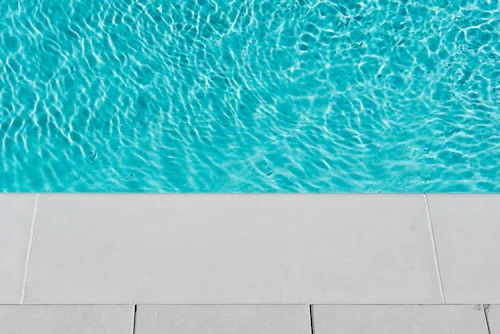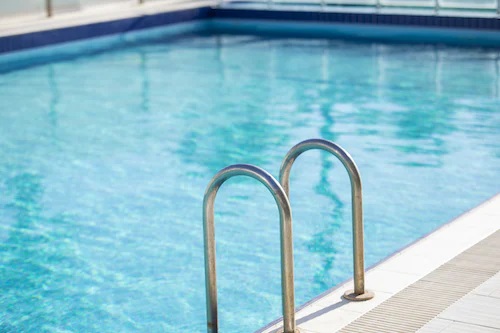

Council is responsible for managing the Swimming Pools Act and Regulations in Sutherland Shire.
You will not need approval for a portable swimming pool or spa if it meets the relevant development standards for exempt development.
If the proposal doesn't qualify as exempt development, you may be able to apply for a Complying Development Certificate or a Development Application.
A Complying Development Certificate may be issued for a swimming pool or spa in the R2, R3, R4 and C4 zones if the proposal meets the relevant development standards. Use Council's Shire Maps to identify the zoning of your land.
You can access the NSW Housing Code to check whether your proposal is complying development in the R2, R3 and R4 zones.
The development standards for complying development in the C4 zone are in Sutherland Local Environmental Plan - Schedule 3.
Council may grant development consent for a swimming pool or spa if the proposal meets the relevant planning controls.
You can view the planning controls for dwellings and ancillary development in Sutherland Shire Local Environmental Plan 2015 and Sutherland Shire Development Control Plan 2015 - PDF - 1684 KB.
The NSW Department of Planning and Environment has a useful guide to the DA process.
Between 1 August 1992 to 30 June 2010 the Swimming Pools Act provided an alternative to the general requirements of the location of pool child resistant barriers. These are referred to as exemptions.
Even if your pool falls into an exempt category we strongly recommend that you upgrade your pool to comply with current safety requirements.
What pools does exempt status apply to?
Provided owners ensure means of access to a pool is at all times restricted, exempt status applies to:
- Pools constructed prior to 1 August 1990.
- Pools on waterfront properties constructed before 1 July 2010.
- Pools on properties having an area less than 230 square metres, constructed before 1 July 2010.
- Pools on properties having an area of 2 hectares or more, and constructed before 1 July 2010.
Pool owners should note that pool exempt status does not remain for the life of the pool.
For more information about your pool exemption status, contact a council pool safety officer or apply for a pool certificate of compliance.
Additional types of pool exemption
If you do not meet the above criteria, there are circumstances where a pool owner can apply for a Pool Exemption under Section 22 of the Swimming Pools Act.
To do this you need to:
- Complete a pool exemption application and lodge with council. Payment of the legislated application fee is payable at the time of submission.
- In the application you will need to provide reasons why you should receive exemption status with reference to rules outlined in Section 22.
- After we receive your application and payment, you will be contacted by council to arrange a pool inspection.
Before applying for a certificate of exemption review Section 22 of the Swimming Pools Act.
Apply for a Pool Certificate of Exemption - PDF - 129 KB
Retaining pool exemption status
The pool barriers and means of access must continue to comply with the safety standard applicable at the time the pool was installed.
Losing exempt pool status
When you lose exempt pool status for any of the following reasons you must ensure you comply with all current pool safety requirements. Pool exempt status will be removed when:
- Access to a pool or pool barrier is substantially altered or rebuilt.
- Restricted access to a pool or pool barrier is not provided.
- Restricted access to a pool or pool barrier is not maintained or does not comply.
- Owner fences pool voluntarily, once fenced the exemption cannot be reinstated and all current compliance standards must be met.
- Exempt barrier was not provided or not in place.
- Exempt barrier is removed eg, dwelling is demolished. If the existing pool is being retained, it no longer retains the exemption and requires a child resistant barrier separating the pool from the new residence and adjoining properties, both public and private. The pool is required to be fenced prior to demolition of dwelling.
New structures
New structures such as a garage, carport, shed, boat shed, pergola or the like are required to be outside the enclosed pool area child resistant barriers. Child resistant doors are no longer permitted and door exemptions do not apply for new structures, even though the property may have a complying existing barrier exemption.
Pool Exemption Application
An application for an exemption from a part of the child-resistant barrier requirements can be made. Owners are required to satisfy council that the circumstances warrant an exemption. Council will consider:
- whether it is impractical or unreasonable for the swimming pool to comply with requirements; or
- that the alternative safety provisions being proposed are effective.
Apply for a Pool Certificate of Exemption - PDF - 129 KB
A legislated fee of $250 applies for all applications.
Further information about pool exemptions can be found under s22 of the Swimming Pools Act.
If your pool has heritage significance, you should consult a council pool officer for advice.
Approval requirements
In ground pools
Demolition of in ground pools requires council approval and is classified as complying development. Council's certifiers or accredited private certifiers can assist you with this type of application.
This includes:
- Pools in the ground more than 600 mm.
- Fibreglass, masonry, concrete or similar pools.
Owner responsibilities
- The development must be carried out in accordance with AS 2601—2001.
- The site of the swimming pool excavation must be filled so as to restore the site to the ground level (existing), taking into account any slope to the site. The fill must be compacted and any piping or similar material removed before the pool excavation is filled.
- Provide run off and erosion controls to divert uncontaminated run off around cleared or disturbed areas to prevent soil erosion, water pollution or the discharge of loose sediment from the land.
- Erect a silt fence to prevent debris escaping into drainage systems, waterways or adjoining properties. Provide controls to prevent tracking of sediment by vehicles onto roads.
Above ground pools - including inflatable and prefabricated pools
Generally formal approval is not required (subject to strict removal standards being met) for any of these pool types provided they do not exceed a depth of 600mm in the ground.
Owner responsibilities
- Disassemble the pool and remove all materials from the site.
- Restore the ground level to its natural level and grade.
- Where filling required use only clean drainable fill.
- Filling is to be suitably compacted and graded to natural contours so as not to create a drainage nuisance.
- Suitable erosion control or grass disturbed areas to prevent silt run off into neighbouring properties.
Advise council of pool removal
For pools that did not require approval, we still need to update our records and the NSW Pool Register.
Include 2 photos with your notification, one showing the pool prior to demolition and the second with the pool gone and land reinstated.
Buying
Before buying a property with a swimming pool it is strongly recommended that the pool complies with requirements under the Swimming Pools Act. At the very least, ensure the pool is registered in the NSW Pool Register.
See section below under Pool Barrier Certificate of Non-Compliance for New Owners.
Selling
From 29 April 2016 under the Conveyancing (Sale of Land) Regulation 2010 if the contract of sale relates to land on which there is a swimming pool, a copy of either of the following documents (less than 3 years old) is required to be included in the contract in respect of pool barriers:
- Occupation Certificate - no more than 3 years old
- Pool Certificate of Non-Compliance
Pool Barrier Certificate of Non-Compliance
The certificate of non-compliance, 1 year validity, is in relation to its use within a Contract of Sale only and DOES NOT provide any exemption for an existing owner from carrying out works required to achieve compliance.
Existing Owners
With or without a certificate of non-compliance, the existing pool owner is in breach of the provisions of the Swimming Pools Act 1992 and subject to enforcement action, including the issue of a fine for the pool being non-compliant. This action may involve the Council issuing a Direction under section 23 of the Act to carry out works. So if you have an extended settlement or your settlement is delayed then as the existing owner you are required to carry out the works required for the pool to be compliant with the Swimming Pools Act 1992.
New Owners
The certificate of non-compliance indicates if the pool is or is not a significant risk to public safety.
Assessed as not a significant risk to public safety
With or without a certificate of non-compliance, the new property owners under clause 18BB of the Swimming Pools Regulation 2008 is provided with a time frame of 90 days from the property acquisition date to carry out the works required for the pool barrier to be compliant. After the 90 days the new owners are open to enforcement action where the pool barrier remains non-compliant.
Assessed as a significant risk to public safety
With or without a certificate of non-compliance, the new owners do not receive any additional time frame to carry out the works and open to enforcement action where the pool barrier remains non-compliant.
Renting/Leasing
It is the landlord's responsibility to ensure that the requirements of the Swimming Pools Act have been complied with in respect of the swimming pool on the residential premises.
From 29 April 2016 swimming pool owners will be required to provide the tenant one of the following with the leasing agreement before being able to lease a property with a pool.
- Apply for a Pool Certificate of Compliance - PDF - 160 KB
- Occupation Certificate - no more than 3 years old
Renter's responsibilities
If you live in a property with a pool you must ensure all doors and gates are kept securely closed. If pool fences require repair, it should